Top Photo: Virginia tiger moth caterpillar.
For those who appreciate lepidopteran larvae, last week was caterpillar paradise. Collectively, we rangers found several Virginia tiger moth caterpillars (above and below), a dozen banded sphinx moth caterpillars, a couple of smartweed or smeared dagger moth caterpillars, a southern flannel moth caterpillar and a camouflaged looper. And, thanks to Landscape Tech Jenn we got to see a couple of cauliflower mushrooms.

Virginia tiger moth (Spilosoma virginica), also known as yellow bear caterpillar, can be yellow to dark brown in color. The adults lay eggs on a variety of plants including both woody (shrubs and trees) and herbaceous plants.
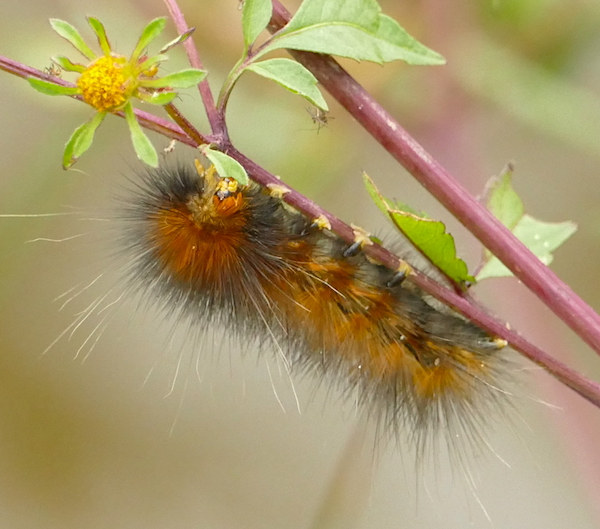
The banded sphinx moth caterpillars (Eumorpha fasciata) which have been noted here in previous posts were easy to find on a cloudy day on the primrose willow growing along the floating walkway in the wetlands. Perhaps the soft, even light helped in picking out the larvae among the like-colored stems and leaves of the plant. With so many to choose from, I took lots of photos.
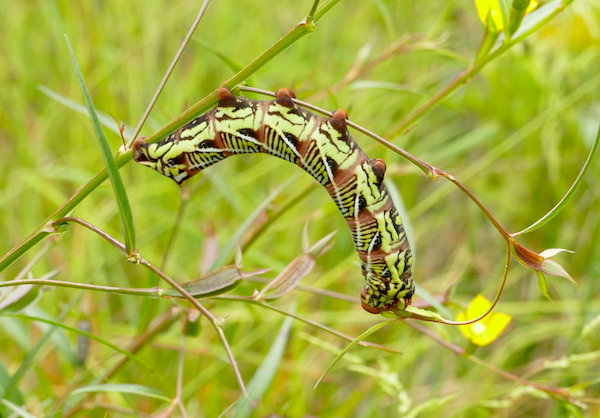
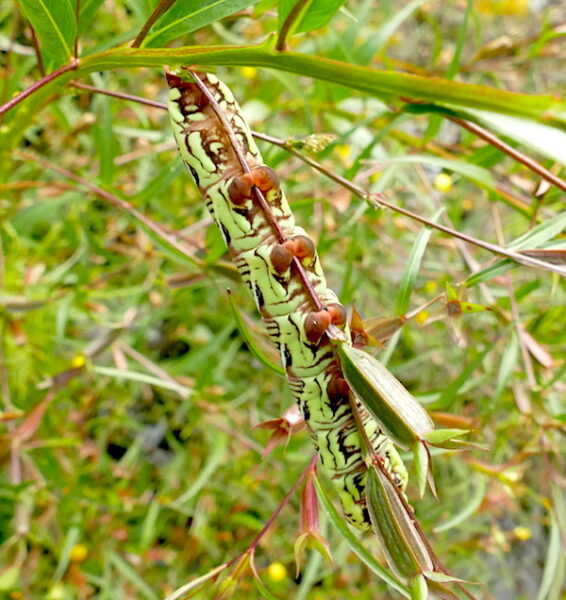
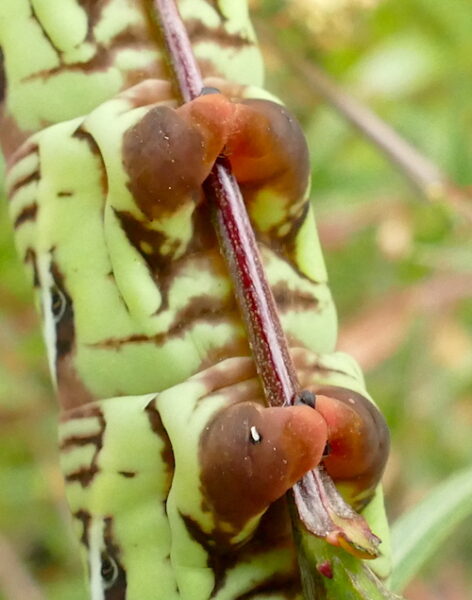
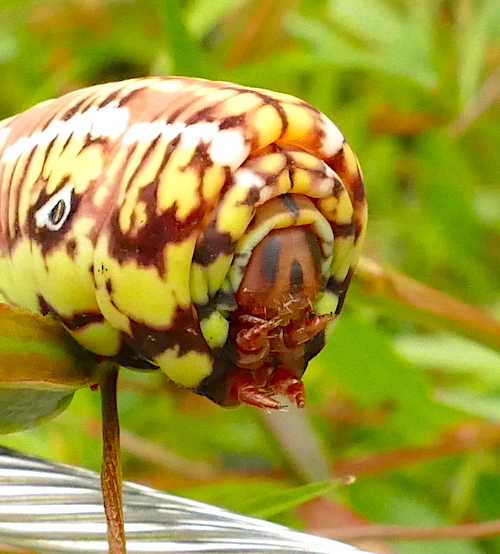
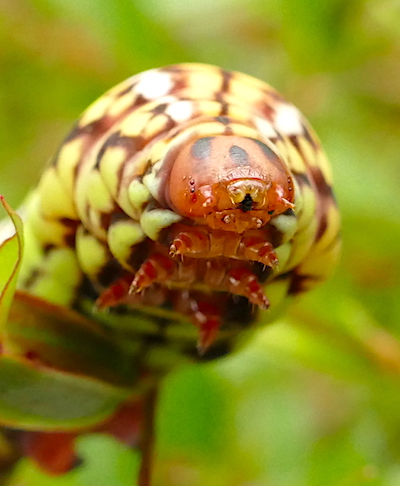
In terms of coloration, another variable caterpillar is the smartweed caterpillar (Acronicta oblinata). It can be black and yellow, black and white or black, red, yellow and white or a combination there-of. I’ve previously only seen them on smartweed, though all but one photo here are of individuals on a composite.
They’re also known as the smeared dagger moth due to indistinct markings on the wings of the adult moths.
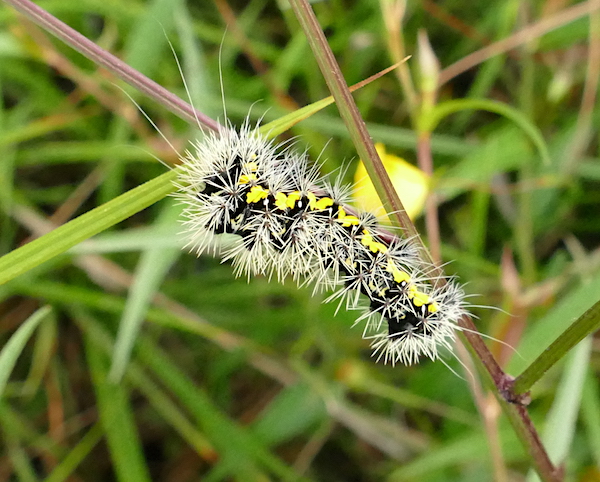

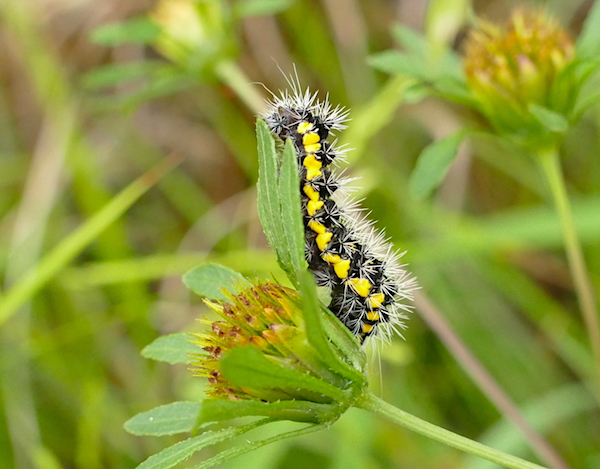
The spines on the caterpillar may irritate your skin, though I had no reaction from touching this caterpillar.
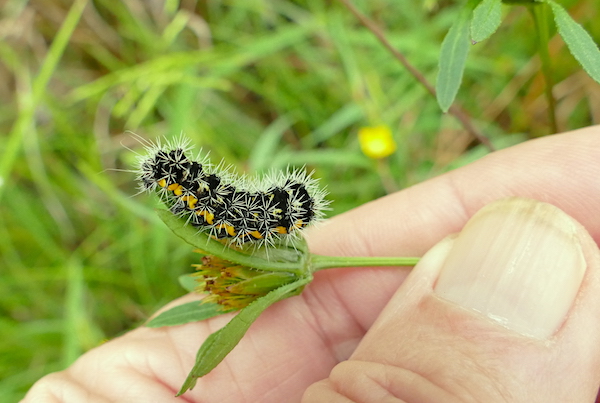
Perhaps the oddest of the group is the finely coiffed, southern flannel moth caterpillar (Megalopyge opercularis) found feeding and resting on silky dogwood alongside the path next to our Red Wolf Enclosure. If you happen to see one of these don’t touch. I hear the setae, or hairs, on this caterpillar can produce a very unpleasant reaction if allowed to make contact with human skin.
They’re alternately known as puss moth (cat-like “fur”?), asp (powerful “bite” or sting from contact), woolly slug (slug-like and woolly), and combinations of those basic terms.
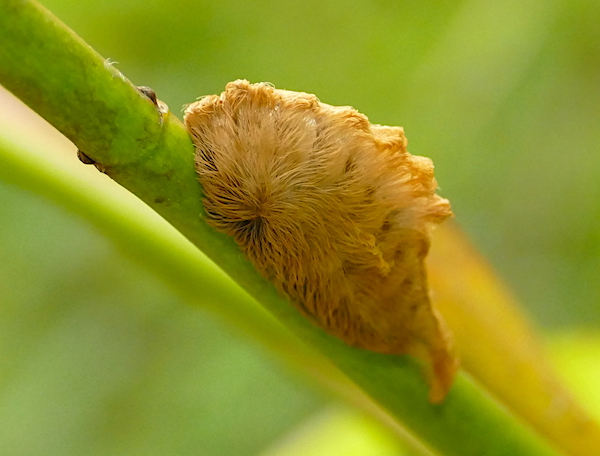
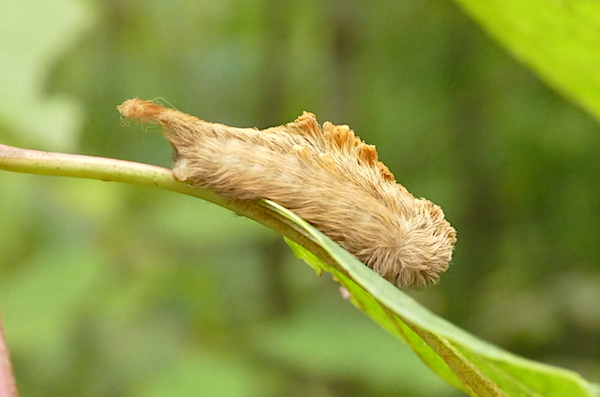
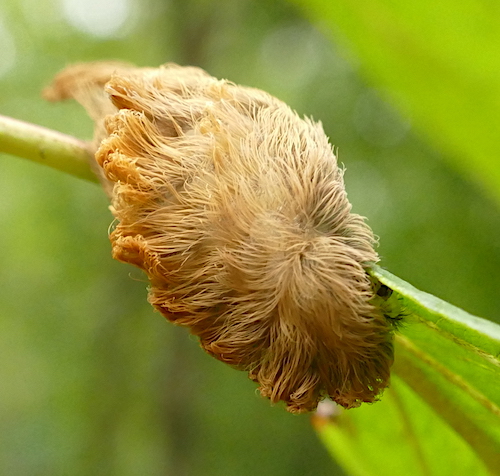

Again, if you see one of these unique looking caterpillars, look, but don’t touch.
The last caterpillar in this group is a tiny individual. Even if you spot it, you may not recognize it as a caterpillar. It’s a camouflaged looper. Here, I’ve discovered one on a crown beard flower cluster. Like the caterpillars above, this is also the larva of a moth species, a wavy-lined emerald (Synclhlora aerata). The adult is a small green moth with wavy white lines across its wings.
The caterpillar uses pieces of the plant it’s feeding on as camouflage, cutting pieces off and attaching them to itself.
I most frequently find a camouflaged looper on black-eyed Susan during summer. I didn’t expect to see one this late in the season, and on crownbeard.
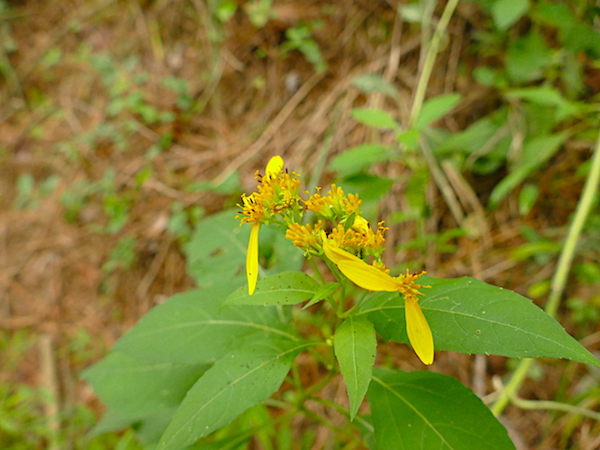
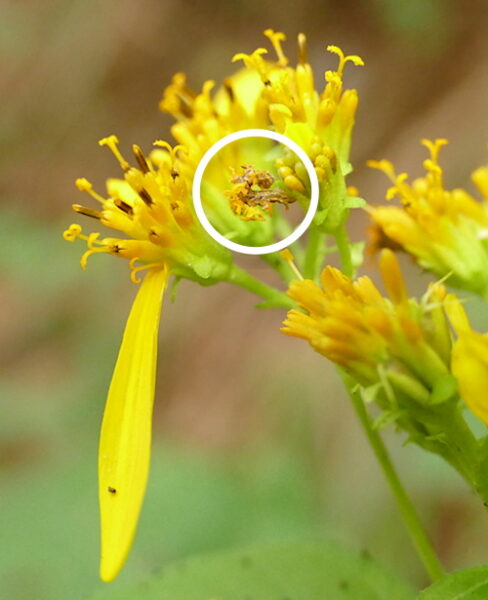
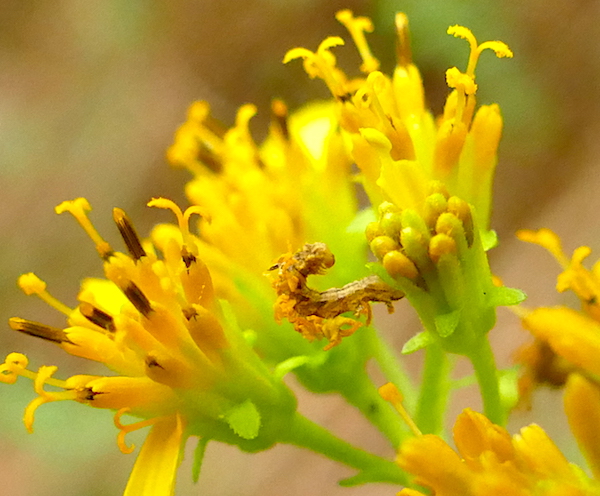
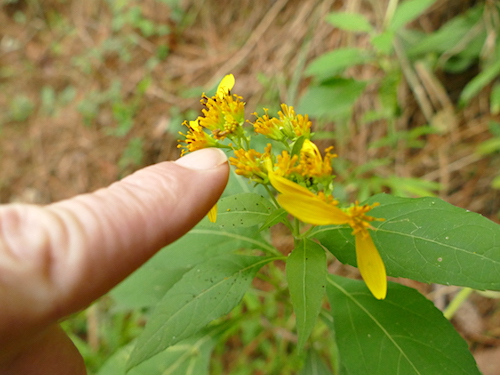
Alerted by Landscape Tech Jenn, there were two cauliflower mushrooms just off the path through the woods near our Pumpkin Patch. There are three or four, or maybe five species in North America (depending on the reference you consult) and they’re reported to be edible. I’ve never tried them but have read they’re “most delicious.”
They’re sometimes referred to as the noodle mushrooms. They do give the impression of being egg noodles.
I’m not endorsing the eating of this fungus, just reporting what I’ve read and seen.
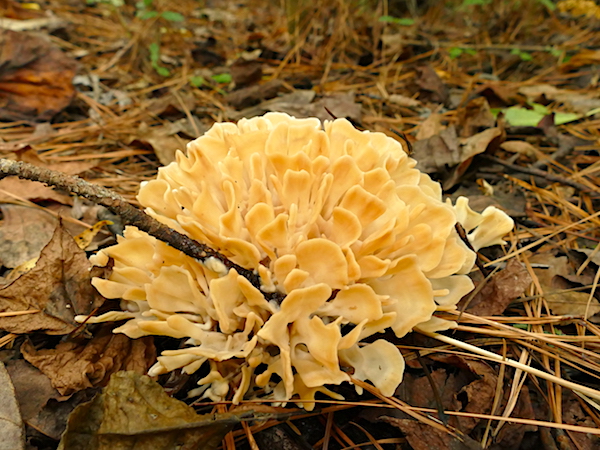
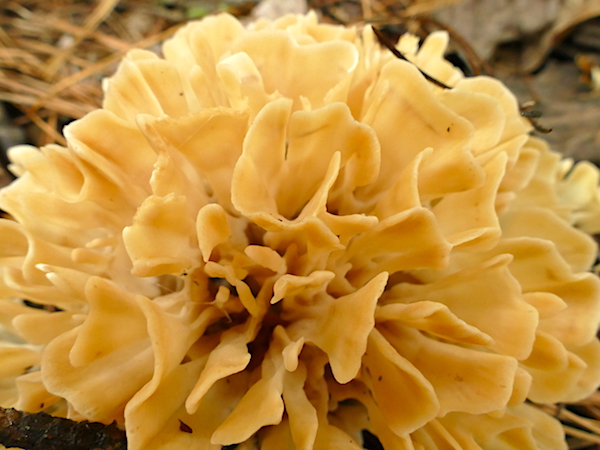
Cauliflower mushrooms grow on dead wood such as logs, stumps or even exposed roots of trees. For more information on the fungus search for them under either cauliflower mushrooms or Sparassis.
Hearst a’bursting, or strawberry bush (Euonymus americanus) is fruiting.
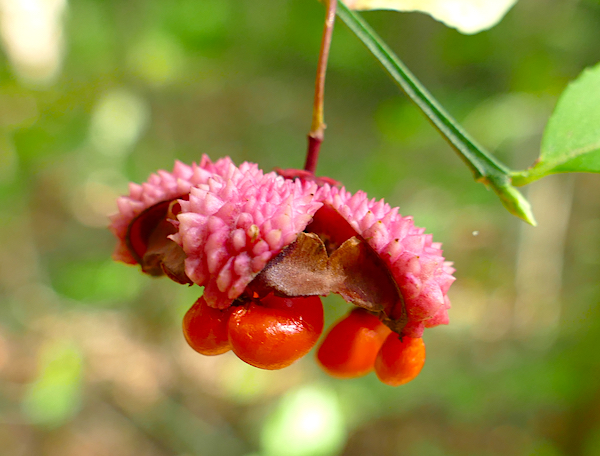
See the bursting hearts just past the Albertosaurus on the Dinosaur Trail and elsewhere along the path in Catch the Wind and Explore the Wild.